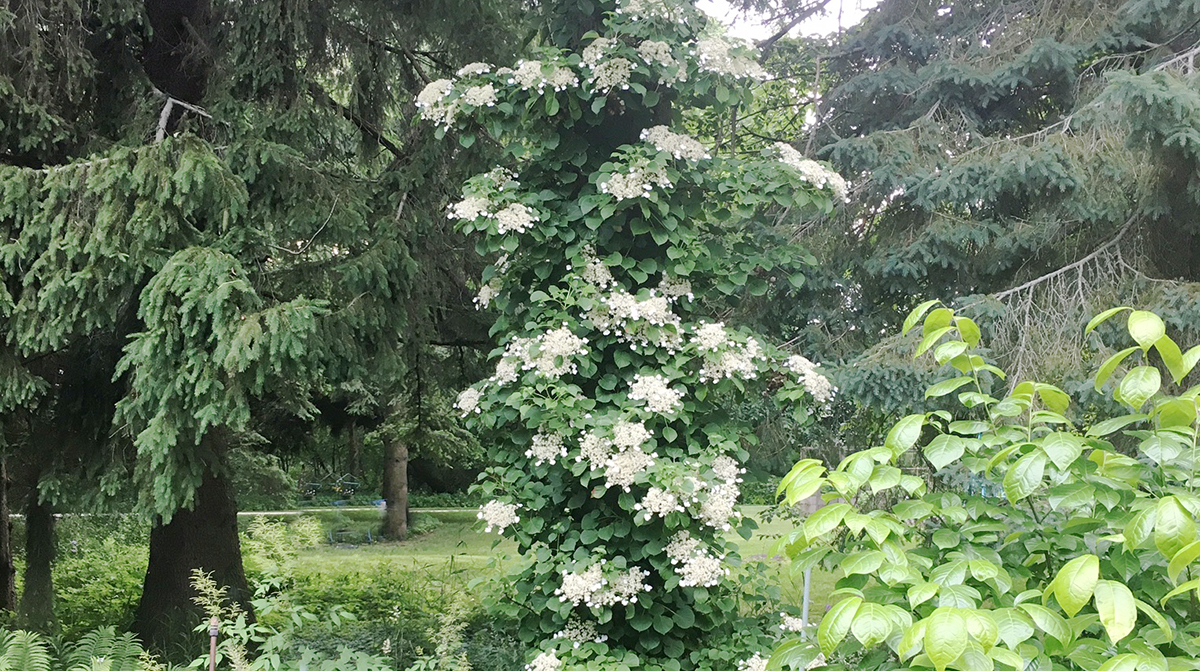Climbing Hydrangea Winter Care: Here Is How To Beat The Chill!
Climbing hydrangeas, renowned for their cascading vines and lush foliage, transform gardens into mesmerizing landscapes, particularly in winter. However, this colder season is often challenging. Even so, it presents a unique opportunity for gardeners to nurture and protect these magnificent plants. Winter care for climbing hydrangeas goes beyond routine maintenance. It’s an essential step in preserving their charm and health throughout the year. That’s why this guide aims to delve deeply into the various aspects of winter care for these wonderful plants. Here you can find detailed insights and practical tips. By ensuring that your climbing hydrangeas are well taken […]
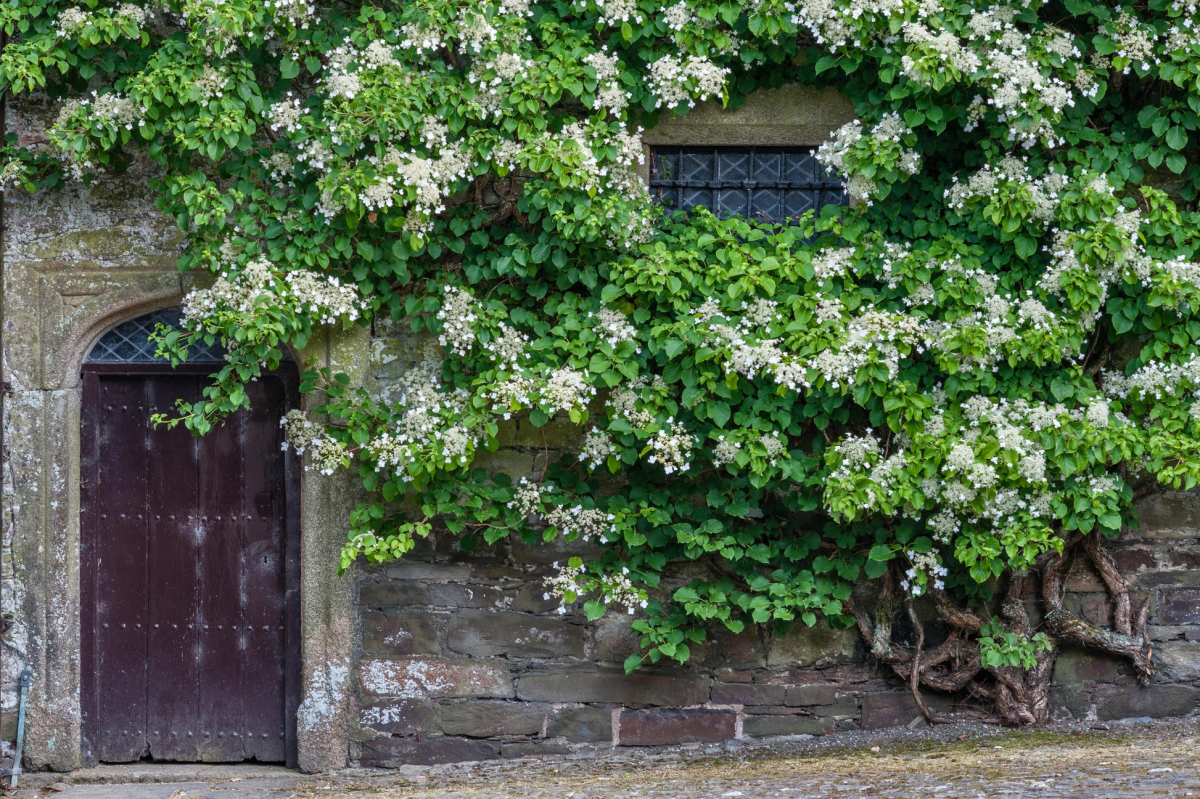
Climbing hydrangeas, renowned for their cascading vines and lush foliage, transform gardens into mesmerizing landscapes, particularly in winter. However, this colder season is often challenging. Even so, it presents a unique opportunity for gardeners to nurture and protect these magnificent plants. Winter care for climbing hydrangeas goes beyond routine maintenance. It’s an essential step in preserving their charm and health throughout the year. That’s why this guide aims to delve deeply into the various aspects of winter care for these wonderful plants. Here you can find detailed insights and practical tips. By ensuring that your climbing hydrangeas are well taken care of during the colder months, they will remain a captivating feature in your garden, resilient and robust even in the coldest conditions. So, here comes our climbing hydrangea winter care guide to the rescue.
Check out our climbing hydrangea winter care guide

Understanding the climbing hydrangea
From the hardy Hydrangea petiolaris to the graceful seemannii, each variety of climbing hydrangea presents its unique requirements when the temperature drops. Personalizing your care approach to suit these specific varieties is key. Known for their expansive vines and delicate, heart-shaped leaves, climbing hydrangeas exhibit a distinctive growth pattern. In the winter months, their growth shifts focus, concentrating on strengthening the roots beneath the soil – a vital process for their overall health. Grasping the nuances of both the subspecies and their individual growth habits and characteristics is your initial step towards effective winter care.
Each variety of climbing hydrangea presents its unique requirements
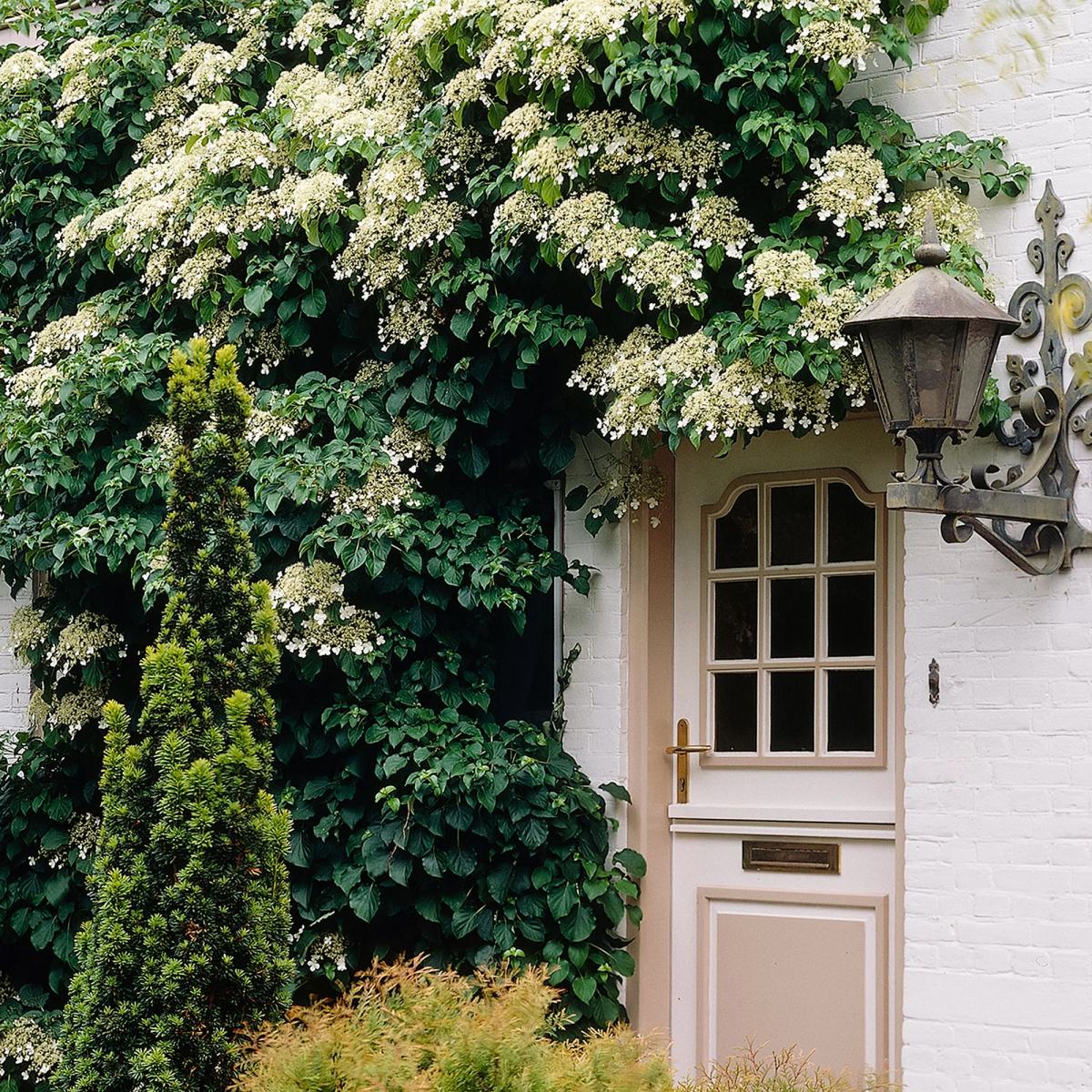
How to care for climbing hydrangea in winter
As the colder months set in, climbing hydrangeas retreat into a dormant phase. This period of rest is critical for their rejuvenation and blooming in spring. The dormancy phase underscores the importance of winter care for maintaining the plant’s overall well-being. Ignoring these needs during winter can lead to weakened plants, more prone to diseases, pests, and environmental stress. Effective winter care is therefore essential, not just for maintaining their current state, but for laying the groundwork for their vigorous growth and blooming in the spring.
This period of rest is critical for their rejuvenation and blooming in spring
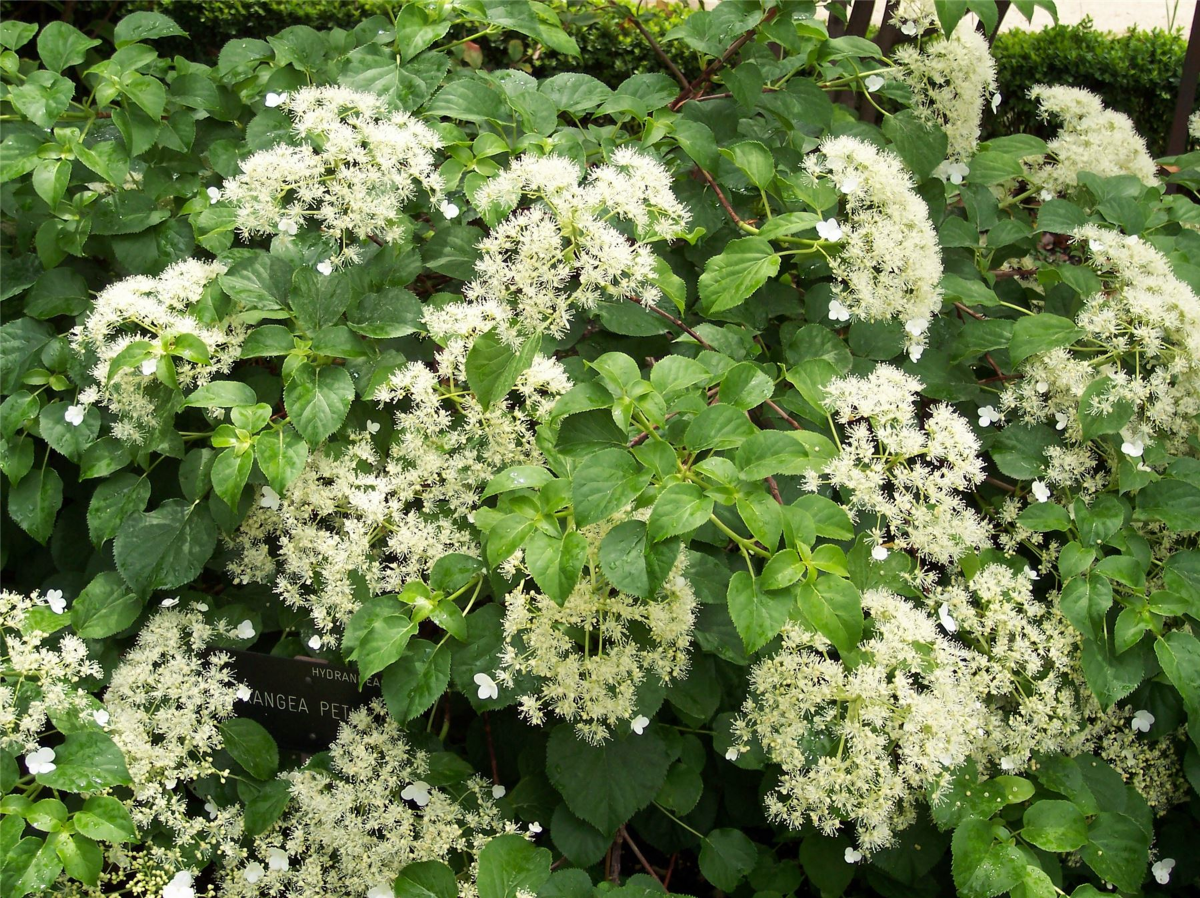
Pre-winter garden audit
Conducting a pre-winter garden audit involves a thoughtful assessment of environmental factors and soil preparation. Take the time to evaluate your garden’s microclimate. Make sure to focus on elements like wind exposure, sunlight availability, and potential snowfall. This careful analysis is instrumental in crafting a winter care plan that’s tailored specifically for your climbing hydrangeas. The condition of the soil is of paramount importance during winter. Ensuring that it’s well-drained yet retains adequate moisture is crucial for the plant’s survival in the colder months. A well-prepared garden bed is a foundation for the health and resilience of your climbing hydrangeas during winter.
Take the time to evaluate your garden’s microclimate
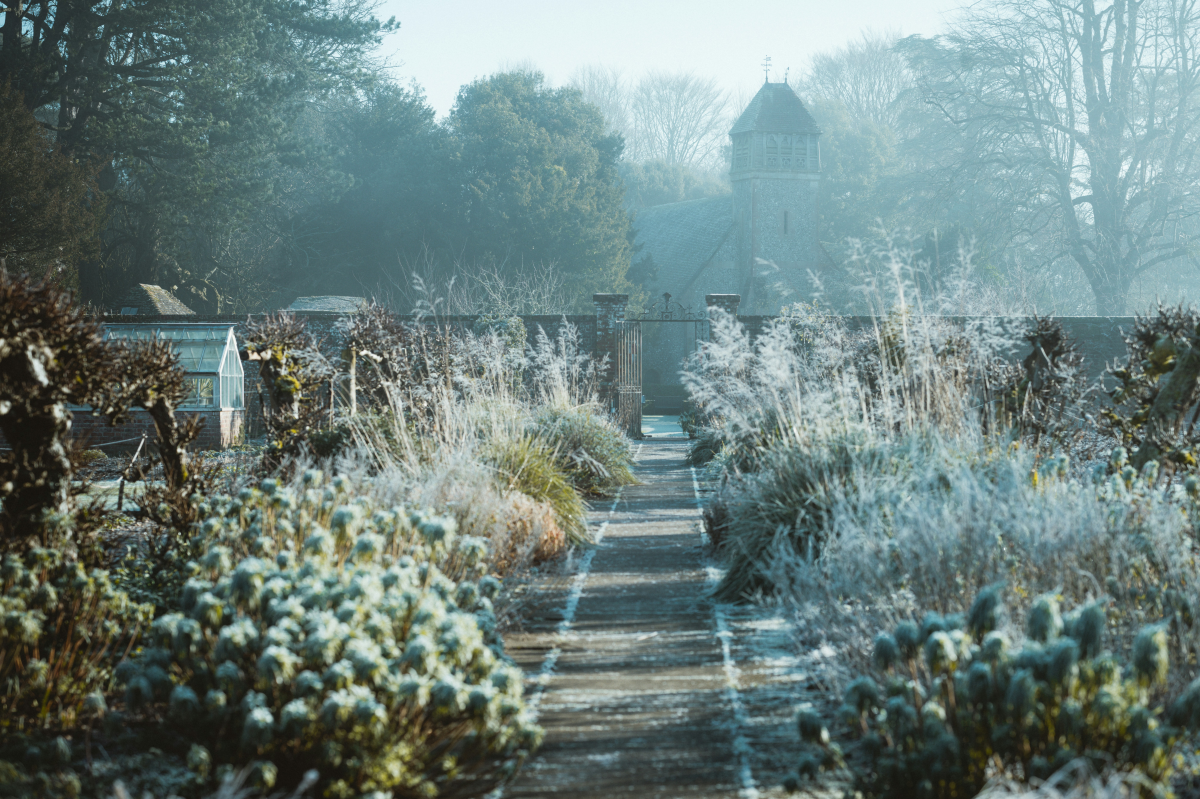
Watering in winter
Adjusting your watering routine is essential during the winter. Climbing hydrangeas require less water when dormant, but the soil should never completely dry out. Striking the right balance in soil moisture is critical. Both over and underwatering can lead to complications such as root rot or dehydration, often signaled by wilting, yellowing, or dropping leaves. Being attuned to these signs and understanding their implications is vital for the well-being of your climbing hydrangeas in winter.
Adjusting your watering routine is essential during the winter

Feeding your hydrangeas
It’s important to make informed decisions about fertilizing climbing hydrangeas in winter. Choosing between organic and chemical options can significantly influence their health. In general, winter typically is not the ideal time for heavy fertilization, as it can encourage untimely growth. However, a light application of organic fertilizer can provide a beneficial boost to the soil. Selecting the right type of fertilizer should be aligned with the plant’s overall health needs and your personal environmental considerations.
Winter typically is not the ideal time for heavy fertilization
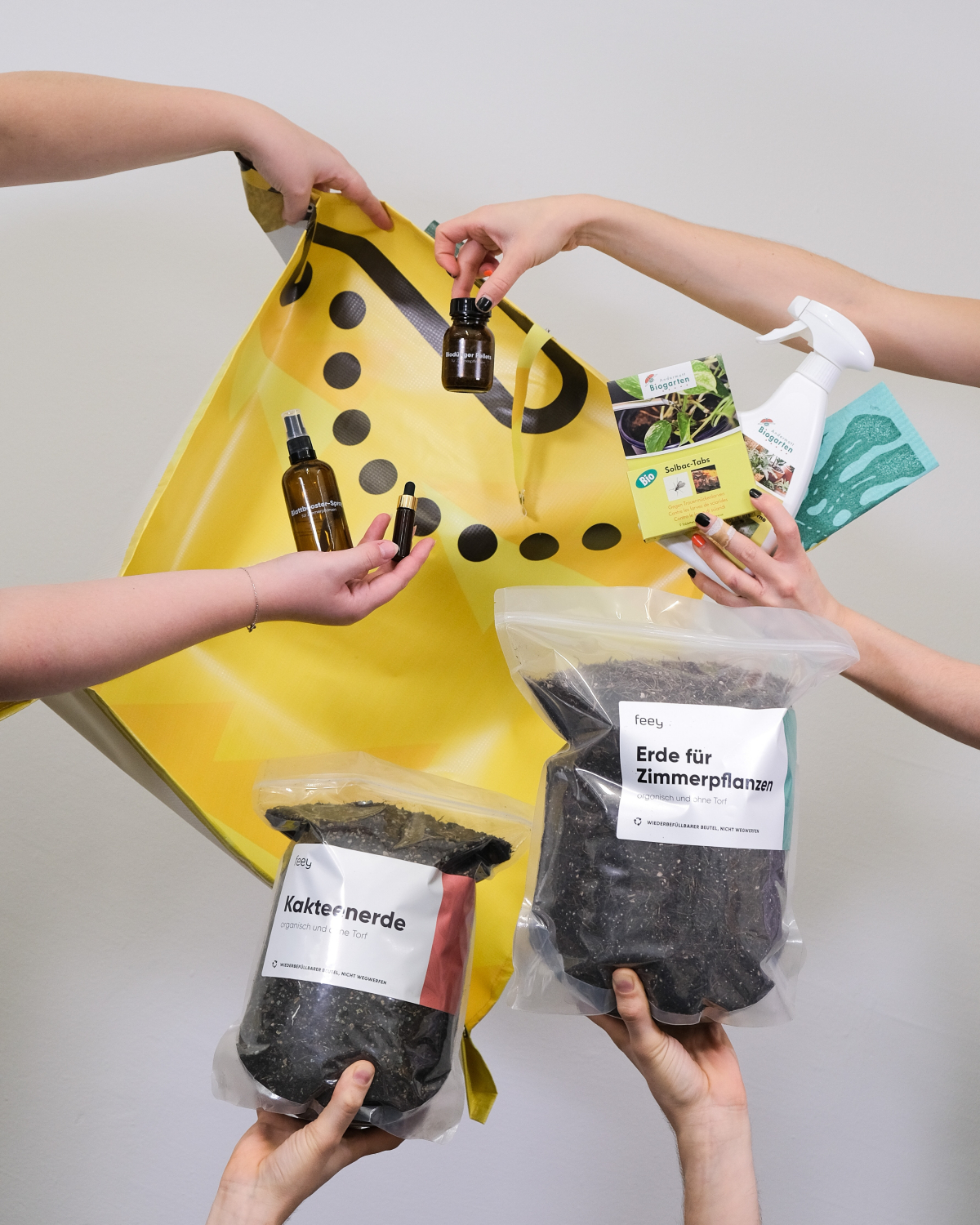
Pruning practices
Pruning your climbing hydrangeas in late winter or early spring, just before new growth starts, is a critical practice. This not only maintains the shape of the plant but also promotes healthy growth and flowering. Pruning is more than just cutting back. It’s a selective process that shapes the future growth of the plant. Removing dead or damaged branches during this time is key to preventing diseases and pest infestations, ensuring a healthier plant that’s ready to thrive in spring.
Prune your climbing hydrangeas in late winter or early spring
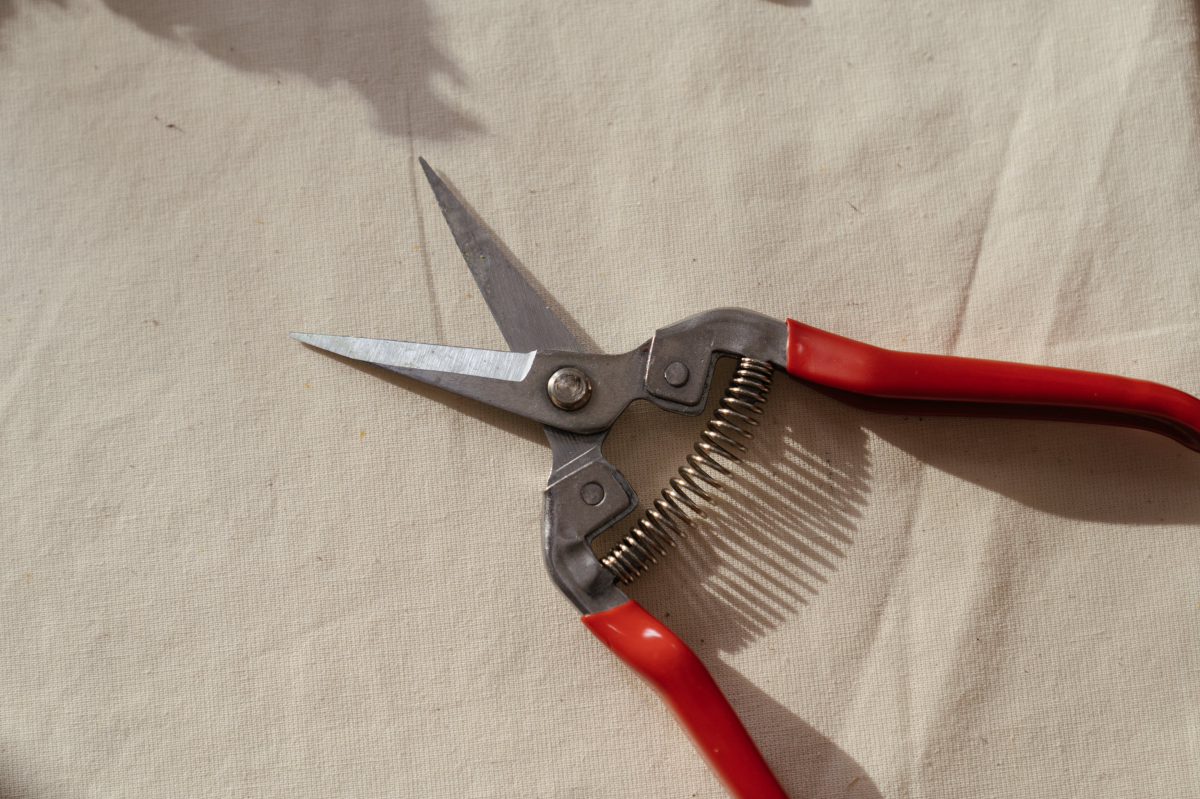
Fighting the cold
Protecting your climbing hydrangeas from the harsh winter conditions is essential. Insulating techniques like mulching and using frost covers or burlap wraps can provide much-needed protection. A generous layer of mulch around the base of the plant acts as a blanket, insulating the root system against the freezing temperatures. Frost covers and burlap wraps serve as a physical shield against frost and wind, which are particularly important for the tender vines and budding flowers of climbing hydrangeas.
Mulch is an essential part of the climbing hydrangea winter care guide

Prevention of pests and diseases
The winter season can pose unique challenges in terms of pest and disease management. Identifying and managing common pests like aphids and mites is essential, as they can be more active in milder winter conditions. Implementing disease control strategies is also crucial to prevent fungal and bacterial diseases that thrive in cold, damp environments. Regular inspections and proactive measures are key to minimizing the risk of pest and disease infestation during winter.
Winter can pose unique challenges in terms of pest and disease management
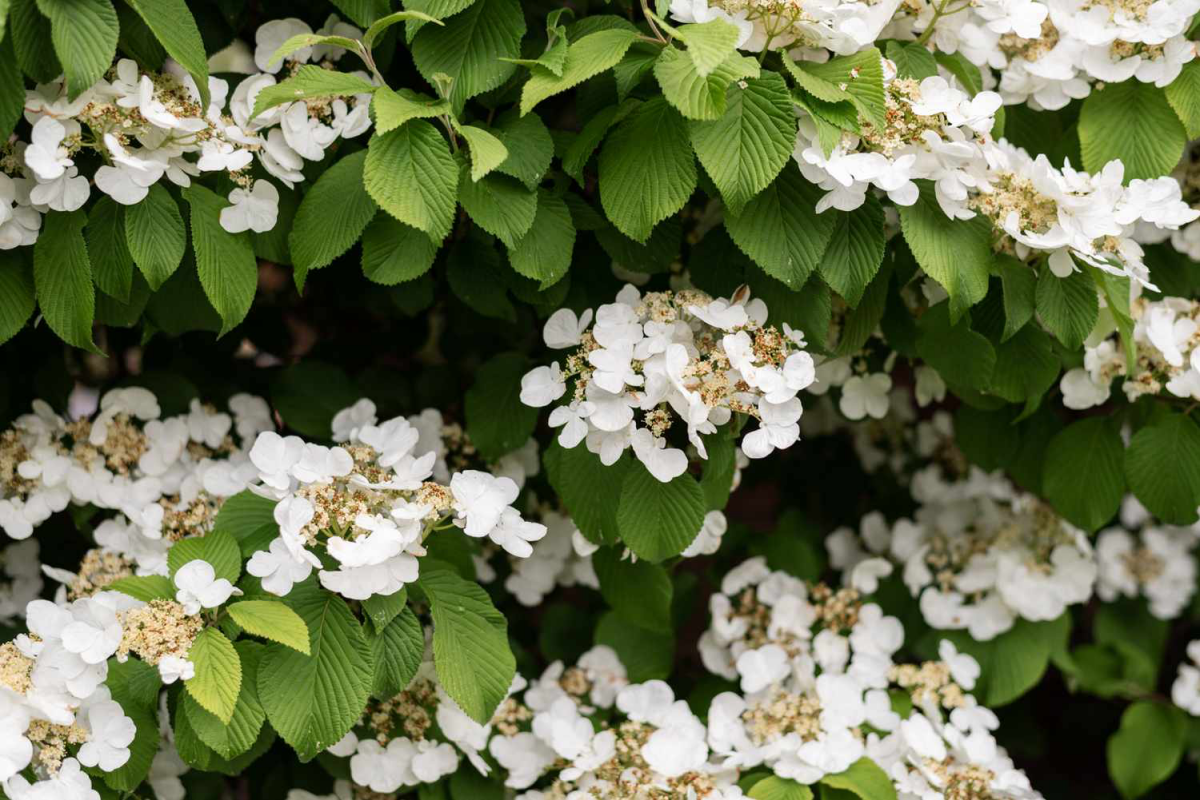
The perfect amount of sun and warmth
It’s essential to ensure that your climbing hydrangeas receive adequate sunlight during winter. This is absolutely crucial for their health. At the same time, protection from extreme temperature fluctuations is equally significant. Sudden temperature drops can be detrimental, so implementing strategies to counter these effects, such as positioning plants in sheltered areas or using protective covers, is essential. Finding the right balance between sunlight exposure and temperature protection is vital to maintain the health and vigor of your climbing hydrangeas throughout the winter.
Make sure your climbing hydrangeas receive adequate sunlight during winter

Special care for potted climbing hydrangeas
Potted climbing hydrangeas also need some extra attention during winter. Moving them indoors or into a greenhouse can offer protection from severe winter conditions. Once indoors, it’s crucial to maintain appropriate light, humidity, and watering levels. Indoor care differs significantly from outdoor care, focusing more on controlling environmental conditions to emulate natural outdoor settings as closely as possible.
Potted climbing hydrangeas also need extra attention during winter

Eco-friendly winter care
Adopting sustainable gardening practices and natural remedies for winter care benefits both your plants and the environment. Utilizing eco-friendly methods like organic mulches and natural pest control not only enhances the health of your garden but also contributes to broader environmental conservation efforts. Exploring natural solutions for common gardening problems is both a rewarding and responsible approach.
Try adopting sustainable gardening practices this winter season
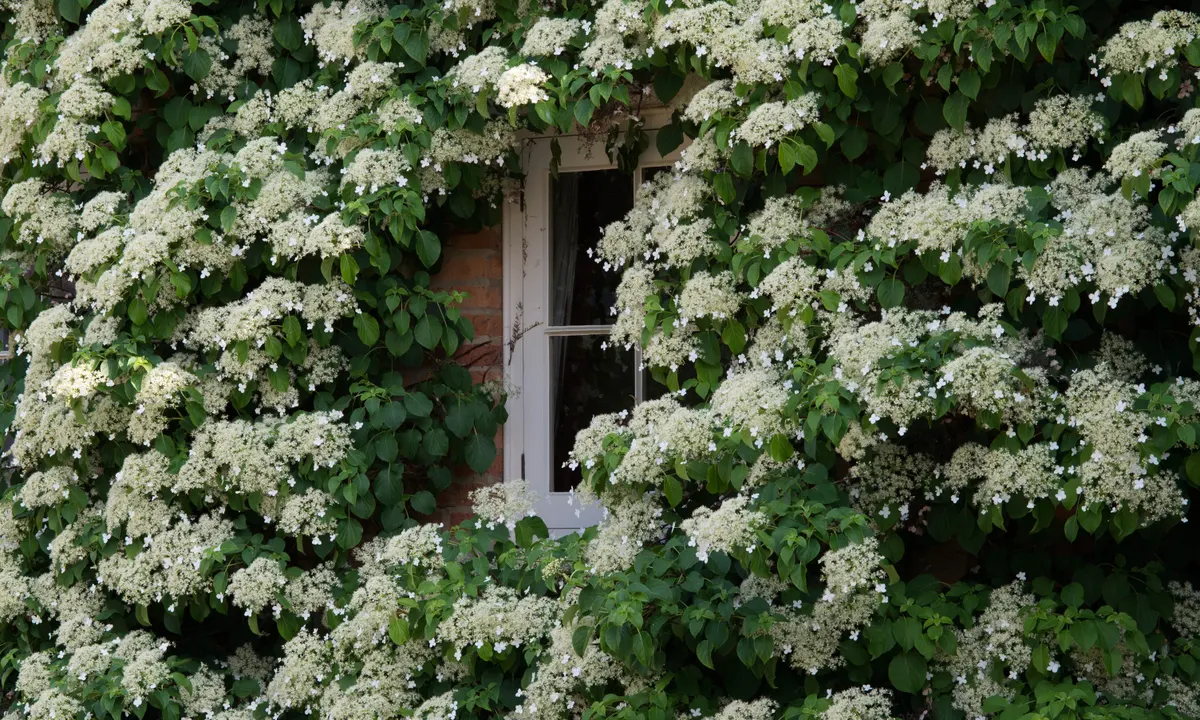
Troubleshooting common issues
Winter can bring several common issues. Some include yellowing leaves, dropping buds, and root rot. Yellow leaves and dropping buds often result from environmental stress or improper care, such as over or under-watering. Root rot is a more serious condition that requires immediate attention. Promptly identifying the cause and implementing effective solutions can save the plant and set it up for healthy growth in spring.
Winter can bring several common issues
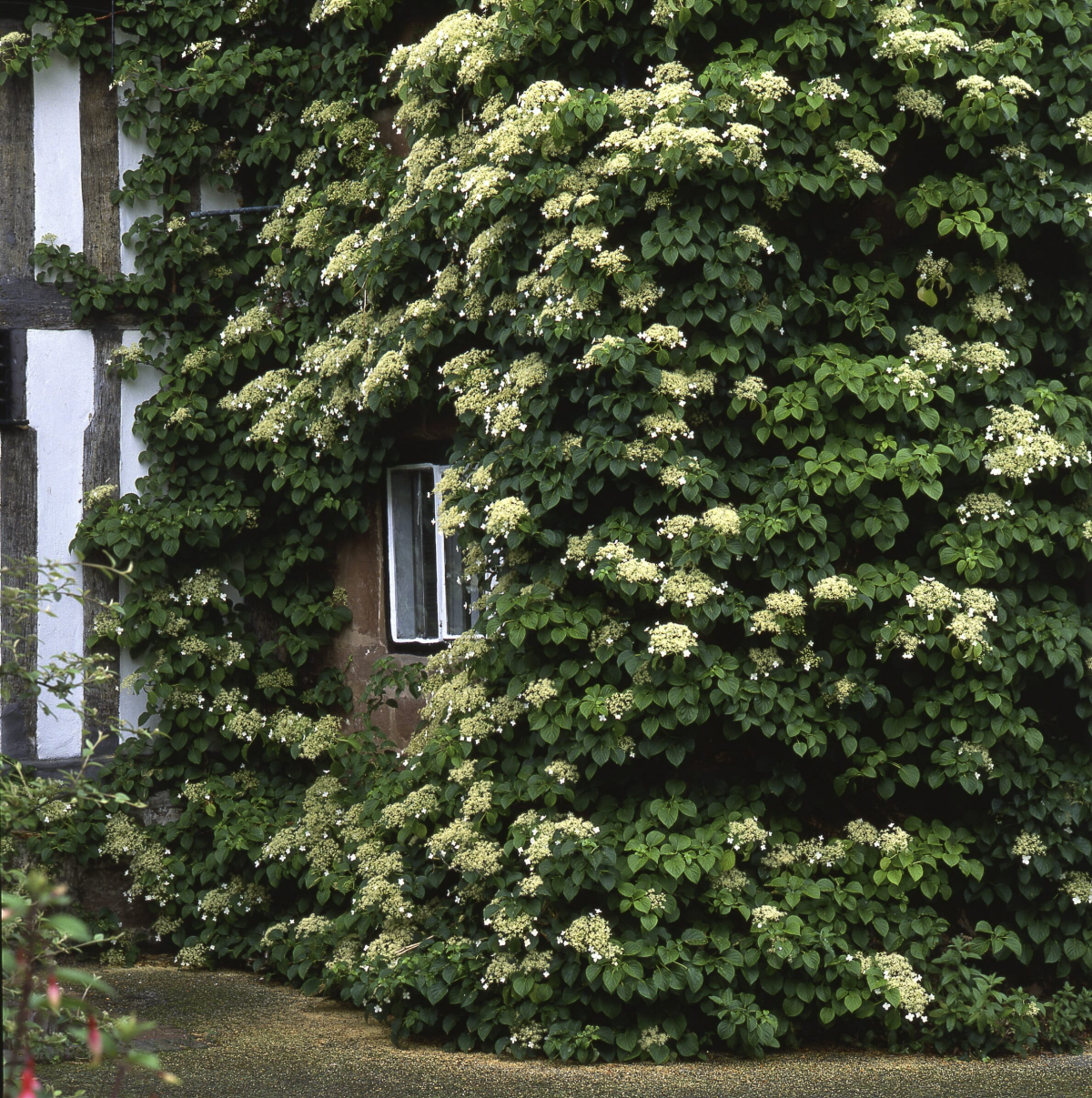
How to winter landscape with climbing hydrangeas
Climbing hydrangeas can play a crucial role in winter landscaping. Even when dormant, they add structure and interest to any garden. Designing with dormant vines and pairing them with other winter-hardy plants can create a visually appealing garden that thrives throughout the year. Creative landscaping with climbing hydrangeas can turn a winter garden into a stunning visual display.
Climbing hydrangeas can play a crucial role in winter landscaping
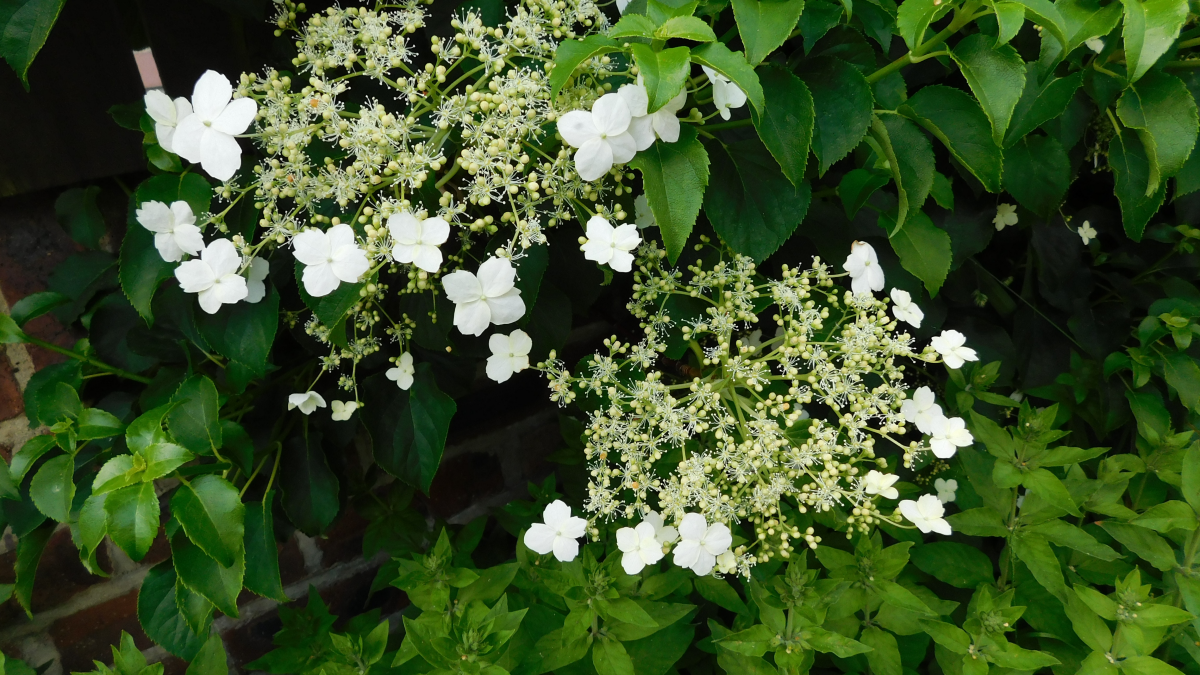
Well-cared-for climbing hydrangeas in winter lay the foundation for a vibrant and healthy spring. The efforts and dedication put into winter care pay off handsomely. Soon these magnificent climbers will come back to life, ready to captivate once again. Reflecting on the joys of winter gardening and anticipating the upcoming spring, gardeners can take pride in their pivotal role in nurturing these beautiful plants through the colder months. We truly hope you found this climbing hydrangea winter care guide useful!
The efforts and dedication put into winter care pay off handsomely
